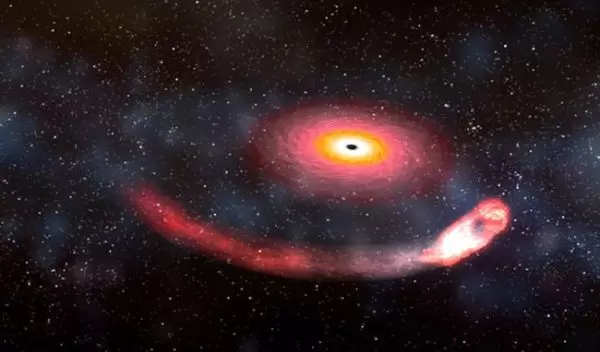
Researchers observe energy exchange of black hole consuming a star
Researchers at the Harvard-Smithsonian Center for Astrophysics, funded by the U.S. National Science Foundation, examined the source of a neutrino near a black hole that had swallowed a star. Data from the research indicated that while the energy output was impressive, it was insufficient for a neutrino event. The results are published in The Astrophysical Journal.
Neutrinos are subatomic particles that can be generated from flows of excess materials that are not sucked into the vortex of a black hole but instead ejected into space. Scientists traced the origins of a neutrino that landed in Antarctica and linked it to a black hole that had recently consumed a star, a phenomenon also known as a tidal disruption event, or TDE.
Astronomers initially believed that the magnitude of TDE AT2019dsg precipitated the neutrino. However, new data indicated the energy generated by the TDE was insufficient to develop a neutrino.
“Instead of seeing the bright jet of material needed for this, we see a fainter radio outflow of material,” said Kate Alexander of Northwestern University, a co-author of the study. “Instead of a powerful firehose, we see a soft wind.”
The team used the Very Large Array in New Mexico and Atacama Large Millimeter/submillimeter Array in Chile to observe TDE AT2019dsg for more than a year after it started. Radio brightness peaked around 200 days after the event began, and data show the total amount of energy in the outflow was equal to energy radiated by the sun over 30 million years, a fraction of the energy required to spark TDE AT2019dsg.
This observance of AT2019dsg marks the most in-depth examination of a TDE to date.


